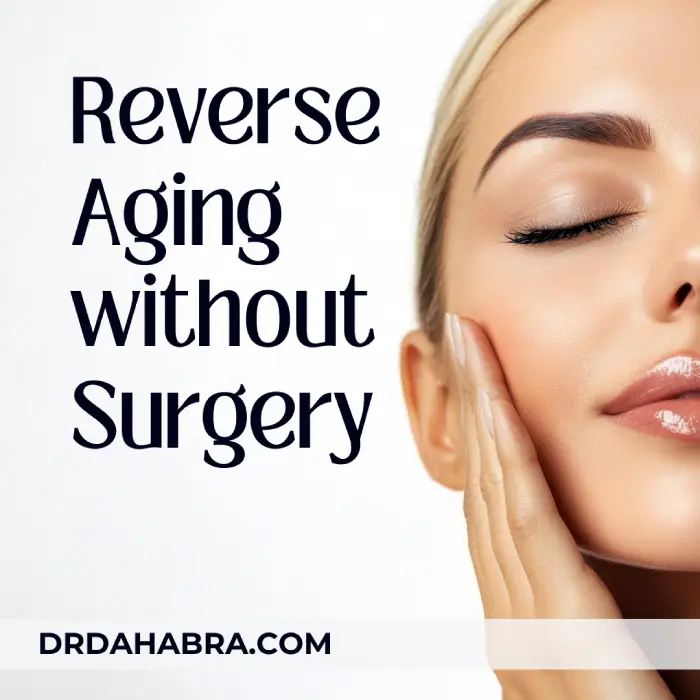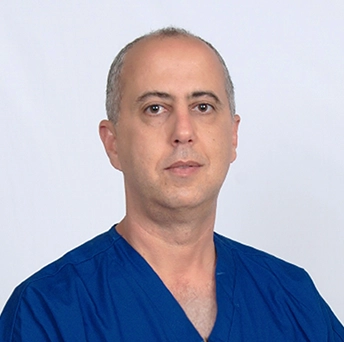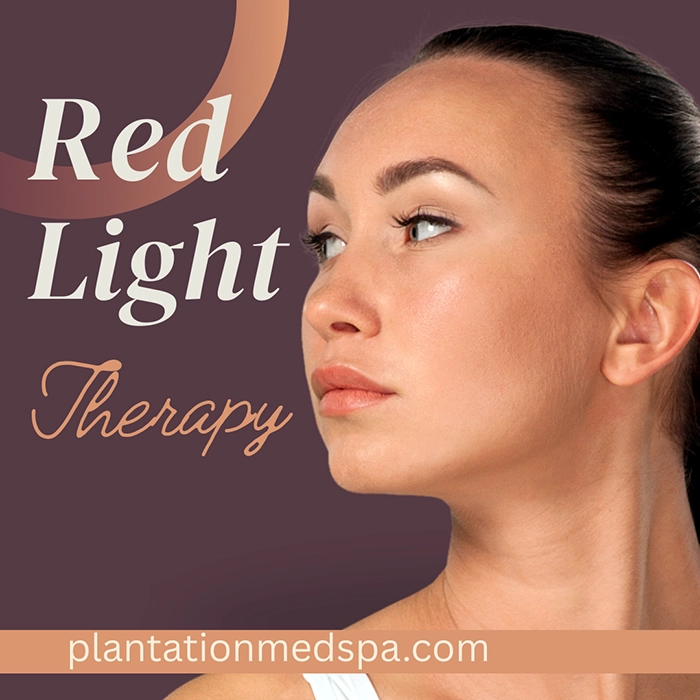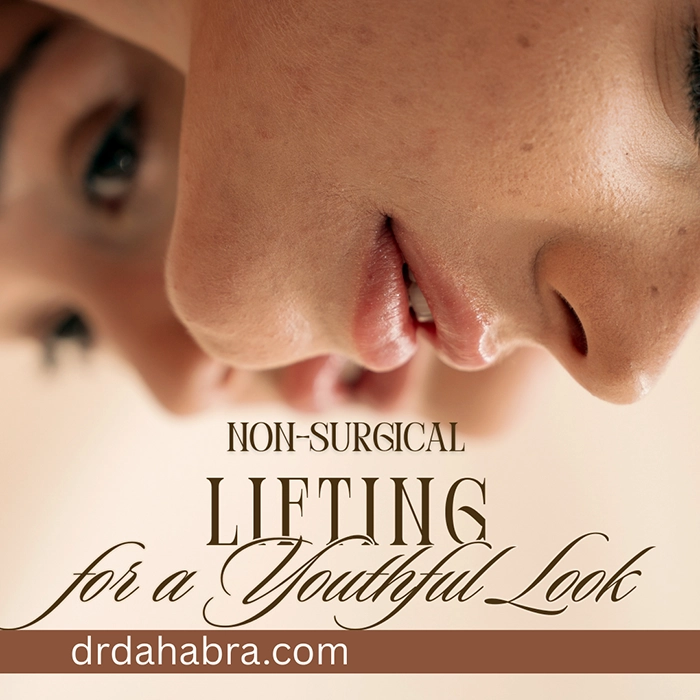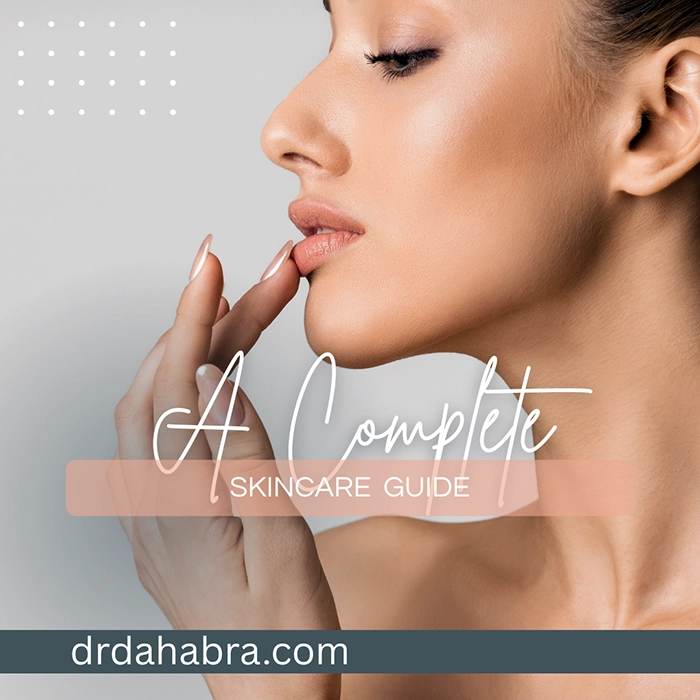How to Reverse Aging: The Ultimate Guide to Nonsurgical Solutions
What Does “Reverse Aging” Really Mean?
When you hear “reverse aging” or “reversing biological age,” it sounds like time travel. This article explores How to Reverse Aging Without Surgery.
In reality, it refers to enhancing the structure, function, and appearance of cells and tissues to make them look and feel younger. It’s less about turning back the clock completely and more about slowing, halting, and partially undoing damage at the cellular and skin levels.
In short, you can’t become your 20‑year‑old self again, but you can regain vitality, firmness, glow, and resilience in your tissues.
Reverse aging naturally involves combining natural anti-aging methods, non-surgical anti-aging treatments, and lifestyle optimizations. It means stimulating your body’s innate repair systems (cellular rejuvenation techniques), boosting collagen, reducing oxidative stress, and protecting against further damage.
A fully integrated approach touches skincare, diet, exercise, supplements, stress management, and periodic non‑invasive dermatologic treatments.
Ready to reverse aging without surgery?
Discover the most effective non‑invasive treatments, antiaging superfoods, and lifestyle hacks to reclaim your youthful glow. Learn the science behind it all and start your journey today!
Whether you’re in your 30s and seeking preventive care or in your 60s, looking to tighten and rejuvenate, this guide shows you how to create a personalized antiaging skincare routine and nonsurgical antiaging plan tailored to your skin goals.
Índice
1. How Do Botox and Dysport Help in Wrinkle Reduction?
2. Can Dermal Fillers Restore Lost Volume Safely?
3. How Does RF Microneedling Tighten Skin Without Surgery?
4. Is Laser Resurfacing a Safe Option for Skin Renewal?
5. What Role Does PRP Therapy Play in Rejuvenation?
6. How Does HydraFacial Promote Deep Hydration and Glow?
7. Are Chemical Peels Effective for Skin Rejuvenation?
8. Can Ultherapy Provide a Nonsurgical Facelift?
9. How Does LED Light Therapy Stimulate Collagen Production?
10. Could Cryotherapy Help with Skin Rejuvenation?
11. Why Is Daily Sun Protection Critical for Antiaging?
12. How Do Hydration and Skincare Ingredients Preserve Youthful Skin?
13. How Does Stress Management Support a Youthful Appearance?
14. What Are the Main Causes of Visible Aging, and How Can You Avoid Them?
15. Preguntas más frecuentes (FAQ)
16. Conclusión
17. Referencias
1. How Do Botox and Dysport Help in Wrinkle Reduction?
Botox and Dysport are neuromodulators; they block signals from nerves to facial muscles, temporarily reducing the contractions that cause expression lines, such as forehead creases, crow’s feet, and frown lines.
Because many wrinkles are dynamic (caused by muscle movement), blocking muscle action can smooth them. This is a crucial aspect of non-invasive wrinkle reduction in modern antiaging medicina.
In effect, Botox and Dysport “freeze” the muscle enough that the overlying skin has time to smooth out, allowing collagen to catch up.
These treatments don’t physically tighten loose skin or restore volume, but they reduce the repetitive stress that deepens lines over time. Many people experience results within 3 to 7 days, with lasting effects of 3 to 6 months (sometimes longer, with repeated use).
Combining neuromodulators with other modalities, such as pairing Botox with laser or RF microneedling, can amplify results and prolong their effects.
For men, Botox and Dysport are often underutilized, but they work well in antiaging treatments for men, too; just the dosage or placement may differ based on more substantial muscle mass.
Always choose a skilled, board-certified provider who understands anatomy and can balance natural movement with wrinkle smoothing, ensuring you don’t lose expressiveness.
2. Can Dermal Fillers Restore Lost Volume Safely?
As we age, we lose fat, bone, and collagen, leading to hollow cheeks, sagging jowls, and under-eye hollows. Rellenos dérmicos (often hyaluronic acid-based, calcium hydroxyapatite, or biostimulatory types) help restore that lost volume.
Strategically placing fillers can support the overlying skin, reduce sagging, and even stimulate collagen in some formulas. In essence, fillers help you “reverse” the impact of structural loss, giving a plumper, lifted look.
Some newer fillers are biostimulatory; they not only provide immediate volume but trigger collagen induction therapy internally over months.
These “fillers plus boosters” help extend the longevity of the effect. Fillers are often used in a “liquid facelift” approach when combined with neuromodulators, radiofrequency, and other skin-tightening modalities.
Evidence suggests that nonsurgical facelift approaches, including fillers, RF, ultrasound, and biostimulatory treatments, can achieve 50–70% of the results typically obtained with surgical facelifts in suitable candidates.
Risks include bruising, swelling, asymmetry, and, in rare cases, vascular complications.
However, with a competent injector and proper technique, dermal fillers can be a key pillar of an effective antiaging treatment plan, especially when paired with non-invasive skin tightening and robust skincare support.
3. How Does RF Microneedling Tighten Skin Without Surgery?
RF microneedling combines two powerful modalities: microneedling (creating controlled micro-injuries to stimulate healing) and radiofrequency (delivering heat deeper into the dermis).
The microneedling component is often referred to as collagen induction therapy, which stimulates the production of new collagen and elastin. The added RF component warms deeper tissues, causing controlled thermal stimulus, contraction of collagen fibers, and further stimulation of remodeling.
This dual approach is excellent for tightening loose skin, refining texture, reducing wrinkles, and stimulating nonsurgical antiaging treatments. Because the energy is delivered precisely to the dermis, the epidermis remains relatively intact, resulting in faster recovery and fewer side effects compared to fully ablative lasers.
Many dermatologists consider RF microneedling one of the most effective nonsurgical facelift adjuncts currently available.
In practice, treatment protocols vary in depth, energy level, and spacing. Most people need a series of 3–5 sessions spaced 4–6 weeks apart.
You may see progressive improvement over 3 to 6 months. When combined with topical growth factors, PRP, or peptides, results can be enhanced.
Due to its relative safety and versatility, RF microneedling is a popular choice in modern antiaging regimens.
4. Is Laser Resurfacing a Safe Option for Skin Renewal?
Laser resurfacing uses concentrated light energy to ablate or thermally injure layers of skin, triggering wound healing, collagen remodeling, and removal of damaged cells.
There are fractional lasers (like Fraxel) that target micro-columns while leaving surrounding tissue intact, and fully ablative lasers (like CO₂) that remove the top layers more aggressively. Fractional lasers are popular in nonsurgical wrinkle reduction and reversing sun damage naturally.
Risks include redness, peeling, pigment changes, scarring, and longer downtime. Individuals with darker skin types require extra care to prevent hyperpigmentation.
However, when performed by experienced providers, lasers can effectively target deep wrinkles, pigmentation issues, acne scarring, and sunspots, yielding dramatic results. Many users combine gentle laser resurfacing with other modalities to build a layered, graduated approach to skin renewal.
In 2025, newer laser systems with cooled tips, adjustable pulse widths, and hybrid fractional modes are increasingly safe and customizable. They are often integrated into the best antiaging skincare routine rather than used in isolation.
5. What Role Does PRP Therapy Play in Rejuvenation?
Platelet-rich plasma (PRP) utilizes your own blood’s platelets, which are concentrated and reinjected or applied to the skin to harness growth factors and healing signals.
In facial aesthetics, PRP is often combined with microneedling (a “vampire facial”) so that the growth factors more deeply penetrate, accelerating collagen induction and enhancing skin texture, tone, and glow. Some studies support its benefits, though results vary.
Because PRP is autologous (from your own body), risks are minimal (aside from standard injection risks). It doesn’t provide structural lift or volume but complements other treatments by enhancing cellular rejuvenation techniques.
Many dermatologists use PRP as a booster for skin health, enhancing microcirculation, promoting collagen production, and addressing pigmentation and fine lines.
It’s best used as part of an integrative antiaging treatment plan, layered with RF, microneedling, energy-based devices, and a robust antiaging skincare routine. Results are subtle but cumulative, making it a beloved “soft” rejuvenation tool in nonsurgical antiaging regimens.
6. How Does HydraFacial Promote Deep Hydration and Glow?
HydraFacial is a multi-step device that cleanses, exfoliates, extracts, and then infuses serums (often antioxidants, peptides, hyaluronic acid) into the skin.
It addresses dehydration, dullness, clogged pores, uneven tone, and mild texture irregularities, helping to maintain a radiant, healthy complexion. Many dermatologists recommend it as an adjunct to more aggressive treatments in a holistic antiaging solution.
While HydraFacial is not a strong tool for tightening or volume restoration, it supports skin health by boosting hydration, strengthening the skin barrier, and improving immediate radiance. In a layered plan, it can be scheduled between more invasive or energy-based sessions to maintain glow and moisture.
Because it’s gentle, HydraFacial is suitable for many skin types and can help improve tolerance for other treatments. Incorporating it into your antiaging skincare routine helps balance intensive treatments with maintenance care for the skin’s ongoing health.
7. Are Chemical Peels Effective for Skin Rejuvenation?
Exfoliaciones químicas use acids (such as glycolic acid, TCA, salicylic acid, or phenol) to exfoliate the outer layers of skin, stimulating turnover, collagen remodeling, and improvement in tone, texture, and pigmentation.
Exfoliaciones superficiales are safe and have minimal downtime, whereas deeper peels require a more extended recovery period. They can help reduce fine lines, fade hyperpigmentation, and generate smoother skin.
Peels won’t lift sagging skin, but they are excellent for reducing age spots naturally and resurfacing sun-damaged skin. Many clinicians combine peels with other nonsurgical treatments to achieve multi-layered improvements.
Ensuring proper skin preparation (preconditioning) and post-care (including sun protection and moisturization) is critical to success and safety.
As an antiaging strategy, peels fit into a broader scheme: think of peels as “reset” treatments that recalibrate skin texture, while RF microneedling, lasers, fillers, and neuromodulators provide depth, volume, and tightening.
Together, they support a robust antiaging skincare routine and help naturally reverse the signs of aging.
8. Can Ultherapy Provide a Nonsurgical Facelift?
Ultherapy is a form of high-intensity focused ultrasound (HIFU) that targets deep tissue layers (including the SMAS layer used in surgical facelifts), stimulating collagen and elastin production without incisions.
It can lift the brow, jowls, and neck in mild to moderate cases of laxity, making it one of the core technologies for a nonsurgical facelift approach.
Results are gradual and appear over 3 to 6 months, with effects lasting up to 1 to 2 years.
Patients often combine Ultherapy with other modalities, such as follow-up RF microneedling or injectables, to fine-tune their results. Some limitations exist when laxity is severe; the best candidates are those with mild to moderate sagging.
Ultherapy exemplifies how modern non-invasive wrinkle reduction and skin tightening technologies can achieve similar outcomes to surgical procedures for many individuals.
In a layered protocol, it’s often used as a backbone treatment, supported by skincare, peels, fillers, and maintenance therapies.
9. How Does LED Light Therapy Stimulate Collagen Production?
LED light therapy (red, near-infrared, or combinations) works through photobiomodulation, where specific wavelengths of light penetrate skin and influence mitochondrial activity, reduce inflammation, and stimulate collagen synthesis.
Red light (approximately 660 nm) and near-infrared light (approximately 810–850 nm) are commonly used in antiaging treatments.
Because LED therapy is non-ablative and gentle, it’s often used as a maintenance tool or adjunct to stronger treatments. It’s safe for most skin types, has minimal downtime, and can soothe redness, boost glow, and support collagen over time.
It’s often referred to as a “spa-level” modality in nonsurgical antiaging treatments.
Some at-home LED devices are available, but professional devices deliver more consistent doses and better penetration.
When paired with potent topical antiaging ingredients (such as peptides, Vitamin C, or growth factors), LED therapy can enhance absorption and yield longer-lasting results.
10. Could Cryotherapy Help with Skin Rejuvenation?
Cryotherapy (cold therapy, such as localized freezing or cold-device facials) is primarily known for reducing inflammation, cooling skin, and temporarily tightening pores.
In whole-body or facial cryo units, it may improve circulation, stimulate antioxidant responses, and reduce puffiness or redness. Some advocates claim benefits for skin rejuvenation, though evidence is still emerging.
Cryotherapy is milder than lasers or RF; it won’t directly tighten loose skin or restore volume. But as a recovery-supportive tool, it may help reduce post-treatment swelling or redness.
In some holistic antiaging regimens, cryotherapy helps maintain skin elasticity, reduce oxidative stress, and support an antiaging lifestyle.
Because the scientific backing is still modest, cryotherapy should be considered complementary rather than primary in an optimal anti-aging treatment plan.
Use it in conjunction with stronger modalities, skincare, a balanced diet, and stress management.
11. Why Is Daily Sun Protection Critical for Antiaging?
Sun exposure (including UV radiation and high-energy visible light) is the single most significant external factor driving photoaging, leading to collagen breakdown, oxidative stress, pigmentation changes, and DNA damage.
Even the best regimen of treatments can be undone by unchecked sun damage. Daily broad-spectrum sunscreen is a foundational component in any antiaging approach.
Using sunscreen consistently protects against new age spots, sagging, and deeper wrinkles. Diets rich in antioxidants help, but they cannot fully counteract UV assault.
Combine sunscreen with sun-protective habits, such as wearing hats, seeking shade, using sunglasses, and avoiding the midday sun. This intervention is far less expensive and safer than attempting to correct damage later.
Without rigorous sun protection, all other strategies (skincare, treatments, supplements) will struggle to keep up. For reversing sun damage naturally, consistent UVA/UVB protection is non-negotiable.
Over time, it helps preserve your results and slows further biological aging.
12. How Do Hydration and Skincare Ingredients Preserve Youthful Skin?
Your skin is ~70% water; lower hydration leads to dullness, creases, and an impaired barrier. Drinking plenty of water and using humectant-rich products (hyaluronic acid, glycerin) helps maintain plumpness.
Hydration and youthful skin go hand in hand: well-hydrated skin is better equipped to resist the formation of wrinkles. Ceramides, lipids, and barrier-repair agents seal in that moisture and prevent transepidermal water loss.
In your best antiaging skincare routine, include powerful antiaging ingredients such as peptides, growth factors, niacinamide, retinoids (or retinol alternatives for wrinkles), antioxidants (such as Vitamin C and resveratrol), and sunscreen.
Layering these with consistent hydration sets the foundation upon which treatments build.
Topical ingredients also support deeper modalities by preparing the skin for microneedling, laser, or energy treatments, and by helping to maintain the results.
In short, no invasive or non-invasive treatment can fully succeed without a strong skincare foundation that supports healthy, youthful-looking skin daily.
13. How Does Stress Management Support a Youthful Appearance?
Chronic stress elevates cortisol and systemic inflammation, which accelerates cellular aging, degrades collagen, impairs the skin barrier, and triggers pigmentation and breakouts.
Managing stress through meditation, breathing exercises, yoga, nature walks, journaling, or biofeedback helps regulate hormone levels and mitigate the effects of inflammatory aging. This is a classic antiaging lifestyle hack.
Quality sleep, as part of stress regulation, supports DNA repair, cellular regeneration, hormone balance, and skin barrier restoration, all of which are vital to slowing the aging process.
Poor sleep is strongly linked to poor skin quality, deeper wrinkles, and accelerated biological aging.
By combining stress reduction with treatments, skincare, a balanced diet, and adequate rest, you can reinforce your body’s own cellular rejuvenation processes.
It’s not optional; it’s an essential pillar in any serious plan to naturally reverse the aging process.
14. What Are the Main Causes of Visible Aging, and How Can You Avoid Them?
Visible aging is influenced by both intrinsic (chronological) and extrinsic (environmental and lifestyle) factors.
Intrinsic aging encompasses genetic predisposition, telomere shortening, mitochondrial decline, and the accumulation of senescent cells. Extrinsic causes include UV exposure, pollution, smoking, poor diet, sleep deprivation, stress, and inflammation.
To avoid visible aging, you must reduce exposure to extrinsic stressors: rigorous sun protection, avoiding smoking, minimizing sugar and processed foods, preventing pollution damage (through antioxidants, topical and systemic applications), and maintaining good sleep and stress management.
Simultaneously, support intrinsic youthfulness via exercise, intermittent fasting, mitochondrial health, best supplements for longevity, and antiaging supplements for skin (e.g., nicotinamide, collagen peptides, etc.).
Finally, target visible signs early: adopt an intensive antiaging skincare routine, begin nonsurgical treatments while the skin is still resilient, and use layered modalities (fillers, RF, lasers, microneedling) to maintain muscle tone, collagen reserves, and volume.
This multi-front strategy is how you truly reverse aging naturally over time.
15. Frequently Asked Questions (FAQs) about How to Reverse Aging Without Surgery
Q1. Can you reverse aging naturally?
Respuesta concisa: Yes, to a degree, by improving cellular health, supporting repair mechanisms, and using nonsurgical treatments.
Respuesta detallada: While you cannot fully reverse every marker of aging, you can slow, halt, and in some cases partially undo damage by combining natural antiaging methods (diet, exercise, stress reduction, sleep), nonsurgical antiaging treatments, and potent skincare.
These methods can improve your skin’s firmness, elasticity, hydration, and cellular function, effectively “reversing aging naturally” over time.
Q2. What is the Japanese secret to antiaging?
Respuesta concisa: The Japanese philosophy often emphasizes sun protection, gentle skincare, layering antioxidants, and minimal irritation.
Respuesta detallada: In Japan, many embrace the concept of “hada no seikatsu” (skin lifestyle) where sun avoidance (umbrella, hats), light layering of powerful antiaging ingredients, frequent moisturizing, and a modest diet, rich in green tea, fish, seaweed, support youthful skin.
They focus on non-invasive wrinkle reduction, skin barrier health, and long-term maintenance, rather than aggressive treatments.
Q3. How can I look 10 years younger than my age naturally?
Respuesta concisa: Combine a strong antiaging lifestyle with selected non-invasive treatments and consistent skincare.
Respuesta detallada: To appear a decade younger, you need to stack interventions: a clean, antioxidant-rich antiaging diet plan; exercise to reverse aging; antiaging supplements for skin; a robust antiaging skincare routine (retinoids, peptides, antioxidants, sunscreen); plus periodic nonsurgical treatments (Botox, fillers, RF microneedling, laser).
Over 3–6 months and beyond, the cumulative effect can produce a significantly more youthful appearance.
Q4. How to take 20 years off your cara?
Respuesta concisa: That’s ambitious, focus on structural support (fillers, lift), robust skin regeneration, and lifestyle overhaul.
Respuesta detallada: Taking off two decades visually demands a complete multi-modality approach: restoring volume (fillers), lifting sagging tissue (Ultherapy, RF, thread lifts), resurfacing skin (lasers, microneedling), smoothing muscle lines (Botox), plus optimal diet, supplements, sleep, and stress control.
While you may not literally look 20 years younger, combining these strategies can yield significantly better results than any single method.
Q5. What is the best nonsurgical treatment for aging?
Respuesta concisa: There’s no one-size-fits-all; RF microneedling and Ultherapy are among the top choices for many people.
Respuesta detallada: The “best” nonsurgical treatment depends on your specific goals (tightening, volume, texture). For skin tightening and collagen renewal, RF microneedling is often considered a top-tier method. For lifting deeper tissue, Ultherapy (HIFU) is frequently used.
For wrinkle smoothing, Botox/Dysport are go-tos. Many experts agree that a layered protocol, combining complementary modalities, produces better and more sustainable results than any single treatment.
Q6. Are there any at‑home devices that actually work for anti‑aging?
Respuesta concisa: Some at-home LED, microcurrent, or low-level RF devices show modest effects, but they are less potent than professional treatments.
Respuesta detallada: At-home red light/LED devices, microcurrent facial tools, mild radiofrequency devices, and microneedling rollers are available and can help maintain results or supplement in-office care. However, their power, depth, and consistency are limited.
They tend to produce a gradual, subtle yield. For significant improvement, in-clinic treatments remain superior, but at-home devices can help you maintain momentum between professional sessions.
Q7. What’s the best nonsurgical procedure for under‑eye bags?
Respuesta concisa: A combination of fillers, PRP, and perhaps low-level laser or RF is often effective.
Respuesta detallada: Under-eye bags (hollows, puffiness) are particularly challenging because the skin in this area is thin. Many practitioners use hyaluronic acid fillers (in the tear trough) to smooth the transition zone, often paired with PRP to enhance skin quality.
Low-level lasers, microneedling, or gentle RF under the eye can help tighten texture. Always choose very conservative, experienced injectors to avoid overcorrection, Tyndall effect, or puffiness.
Q8. Is it possible to reverse jowls without a facelift?
Respuesta concisa: Yes, especially in mild to moderate cases, using nonsurgical lifting and tightening modalities.
Respuesta detallada: Jowls stem from sagging and volume loss. You can mitigate them with Ultherapy (HIFU), RF skin tightening, RF microneedling, and strategic filler placement. These nonsurgical techniques can “lift” and support tissue.
In less severe cases, many individuals achieve noticeable improvement without surgery; however, in advanced sagging, surgical facelifts may still outperform non-invasive options.
Q9. How do I get rid of “tech neck” lines and wrinkles?
Respuesta concisa: Use topical retinoids/peptides, sun protection, microneedling, laser, and neck‑focused RF treatments.
Respuesta detallada: Neck lines (tech neck) are due to repeated bending, sun exposure, and loss of elasticity. To treat them, use topical peptides, retinol alternatives, and moisturizing serums on the neck; protect it daily with sunscreen.
In-office, you can apply RF microneedling, láser fraccional, or specialized neck RF/ultrasound devices. Exercises, posture correction, and avoiding prolonged downward screen use also help as part of a holistic approach.
Q10. What’s a cheaper alternative to Botox that works?
Respuesta concisa: Micro-dosing neuromodulators (Xeomin, Dysport), peptides, or microcurrent can be lower-cost options, although with a milder effect.
Respuesta detallada: If full-dose Botox is expensive, some people opt for micro-Botox (lighter doses spread across larger areas) or neuromodulator alternatives, such as Dysport or Xeomin, which may be less expensive per unit. Non-injection adjuncts (like peptide creams, microcurrent facial devices, and LED therapy) provide milder smoothing but carry much lower cost.
While they won’t replicate the full potency of Botox, they can help maintain a wrinkle-minimized baseline between injections.
Q11. Is it too late to start an antiaging routine in my 40s or 50s?
Respuesta concisa: Absolutely not. Starting later can still yield substantial benefits and slow further damage.
Respuesta detallada: While starting earlier gives more leverage, beginning in your 40s or 50s can still significantly improve skin texture, firmness, and glow. Your skin retains its plasticity and responsiveness even later in life.
By using nonsurgical antiaging treatments, layering home skincare, maintaining a balanced diet, engaging in regular exercise, and practicing stress management, you can reverse damage, slow further aging, and achieve meaningful improvements.
Q12. How can I get rid of arrugas de la frente without resorting to injections?
Respuesta concisa: Use topical retinoids/peptides, microcurrent, LED, laser resurfacing, and RF microneedling.
Respuesta detallada: For forehead lines caused by muscle movement, retinoids or retinol alternatives, peptide creams, microcurrent devices, LED therapy, and fractional laser resurfacing can help soften lines over time. RF microneedling is particularly effective for treating deeper lines by stimulating collagen production and remodeling.
Combining topical and energy-based methods can yield visible smoothing effects without the need for direct injections.
Q13. Is there a nonsurgical option for fixing a double chin?
Respuesta concisa: Yes. You can use treatments such as cryolipolysis (CoolSculpting), Kybella (a nonsurgical injectable), and ultrasound/RF skin tightening.
Respuesta detallada: Double chin (submental fat) can be reduced non-surgically using cryolipolysis (fat freezing devices), or nonsurgical fat-dissolving injections (though technically minimally invasive).
After fat reduction, RF skin tightening or Ultherapy (HIFU) helps firm up the lax skin. These combined strategies can deliver results without the need for liposuction or surgical neck lifts.
Q14. What’s the best diet for someone who wants to look younger?
Respuesta concisa: A diet rich in antioxidants, healthy fats, lean proteins, low glycemic carbs, and periodic fasting supports youthful skin and cellular health.
Respuesta detallada: The antiaging diet plan should emphasize whole, unprocessed foods, including colorful vegetables, berries, fatty fish (rich in omega-3s), nuts, olive oil, legumes, and lean protein. Reduce sugar, refined carbs, and processed foods that spike insulin/inflammation.
Incorporate intermittent fasting or time-restricted eating, which may activate cellular repair pathways (autophagy). Hydrating foods (cucumber, watermelon) and plenty of water also matter.
Combined with supplements (e.g., collagen peptides, nicotinamide riboside, resveratrol), such a plan supports reversing biological age from the inside out.
16. Conclusion: How to Reverse Aging Without Surgery
Reversing aging without surgery isn’t magic, but it is entirely possible, especially with a bright, layered, and consistent strategy.
Your skin and body have innate repair systems; your job is to support them with natural antiaging methods, targeted nonsurgical treatments, and a robust lifestyle foundation.
Begin with the cornerstones: sun protection, hydration, nutrition, stress management, sleep, and a robust antiaging skincare routine. Then layer in the responsible use of modalities like Botox, fillers, RF microneedling, lasers, Ultherapy, and maintenance tools like LED, microneedling, and peels.
Over time, you’ll notice a smoother texture, firmer contours, a more radiant glow, and a boost in confidence.
No approach is perfect. Results vary depending on genetics, skin history, and individual commitment. However, by combining holistic antiaging solutions with carefully selected nonsurgical facelift techniques, you give yourself the best chance to regain youthful vitality, reduce visible signs of aging, and feel vibrant in your own skin.
It’s never too late to start your journey to reverse the aging process naturally.
We have covered everything about how to reverse aging without surgery.
How to Reverse Aging Without Surgery
How to Reverse Aging: The Ultimate Guide to Nonsurgical Solutions with Dr. Dahabra. ¿A qué esperas para liberar tu belleza?
Llámenos ahora al (954) 595-2607 o reserve online. Su viaje comienza con sólo un clic o una llamada.
Abraza la belleza, abraza la innovación - Embrace You.
17. Referencias
Beverly Hills Wellness Center & Med Spa, Florida
Aplicación de modalidades no quirúrgicas para mejorar el envejecimiento facial
Source / Institution: Authors include K. Li et al.; published via PMC / open access.
Summary: This review summarizes various minimally invasive and nonsurgical techniques (including injectables, lasers, energy devices, threads, etc.) used to treat facial aging, and discusses their indications, mechanisms, safety, and potential combinations.
Microneedling in Dermatology: A Comprehensive Review
Source / Institution: S. Jaiswal et al.; published via PMC / NCBI
Summary: This article examines microneedling (also known as collagen induction therapy), its mechanisms, clinical applications (including wrinkles, scars, and pigmentation), safety, and newer combinations (e.g., RF microneedling).
Source / Institution: Ruta Ganceviciene et al.; published via PMC / NCBI
Summary: This comprehensive yet concise review outlines the intrinsic and extrinsic aging mechanisms and surveys a broad spectrum of antiaging strategies — from prevention and cosmetology to topical/systemic agents, as well as energy-based and invasive procedures.
Skin ageing and topical rejuvenation strategies
Source / Institution: T. W. Griffiths et al.; published in the British Journal of Dermatology (Oxford Academic)
Summary: This article reviews the aging changes in skin and current topical/non-invasive rejuvenation strategies, including retinoids, peptides, antioxidants, and their interactions with deeper interventions.
A review of nonsurgical facial rejuvenation and the role of cutaneous biomechanics
Source / Institution: DJ Goldberg et al.; published in the Journal of Cosmetic Dermatology (Wiley)
Summary: This review examines nonsurgical facial rejuvenation options (injectables, energy devices, threads) and explores how the biomechanical properties of the skin influence outcomes and safety.
Source / Institution: L. Di Rosa et al.; published in MDPI (open access)
Summary: This research presents a multi-component formulation (comprising collagen, hyaluronic acid, etc.) and its impact on stimulating skin regeneration, enhancing texture, and improving skin quality in clinical subjects.
Antiaging Strategies and Remedies: A Landscape of Mechanisms, Approaches, and Challenges
Source / Institution: R. Tenchov et al.; published via ACS (American Chemical Society)
Summary: This comprehensive review encompasses lifestyle, molecular, pharmacological, and cosmetic strategies targeting healthy aging, encompassing skin, systemic, and biochemical approaches.
Percutaneous Collagen Induction: An Alternative to Laser Resurfacing
Source / Institution: D. Fernandes; published in Revista de cirugía estética (through Oxford Academic)
Summary: The author describes percutaneous collagen induction (microneedling) as a less aggressive alternative to ablative lasers for early facial aging, discussing its mechanism, protocol, and outcomes.
Source / Institution: M. Alexiades‑Armenakas et al.; published via JAMA Dermatology
Summary: This clinical/histologic study investigates how fractional laser/thermal injury triggers wound healing processes that remodel deep dermal collagen, thereby contributing to wrinkle reduction and skin tightening.
Skin Aging and Type I Collagen: A Systematic Review of Clinical Studies
Source / Institution: O. Bar et al.; published via MDPI (open access)
Summary: The review synthesizes clinical evidence linking the decline of type I collagen to aging skin features and evaluates interventions (topical and oral) aimed at restoring collagen to mitigate signs of aging.
